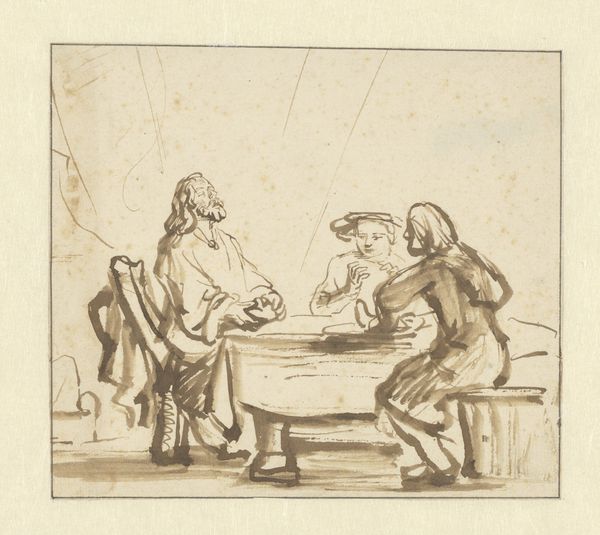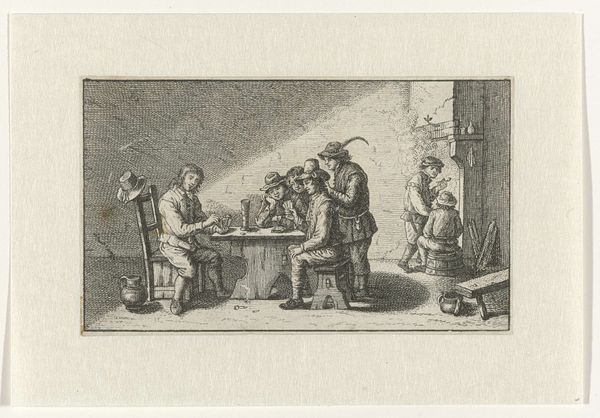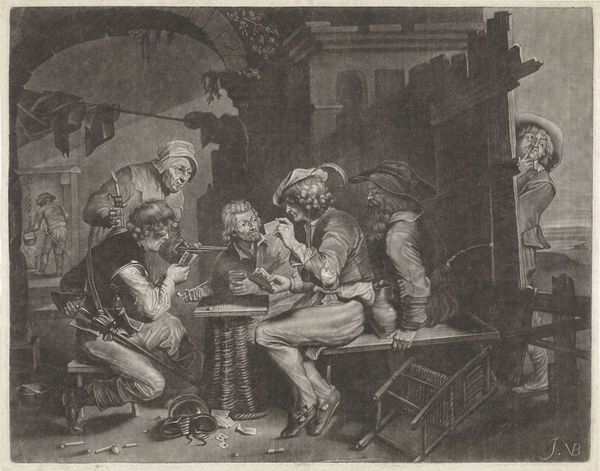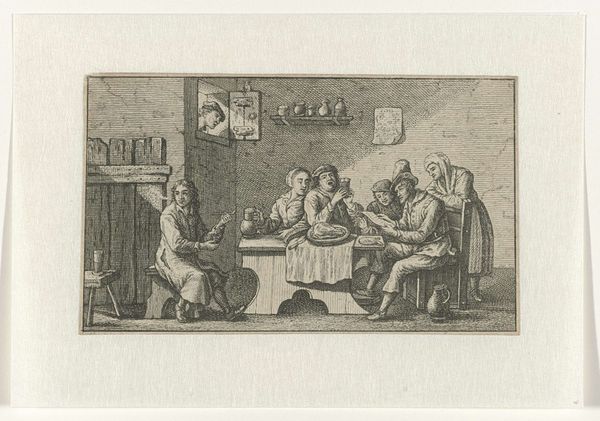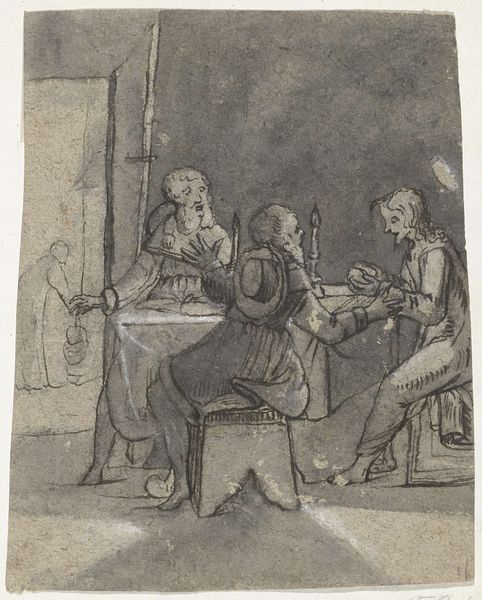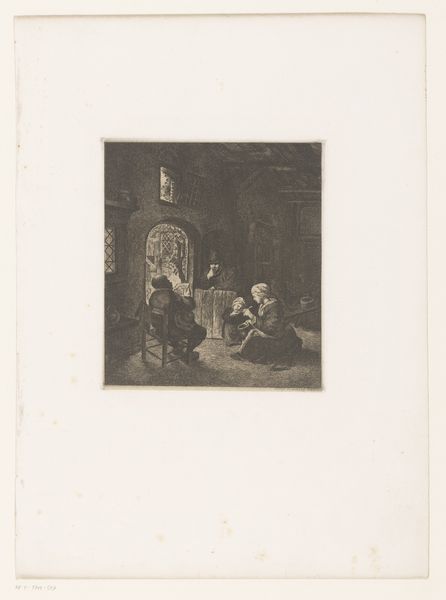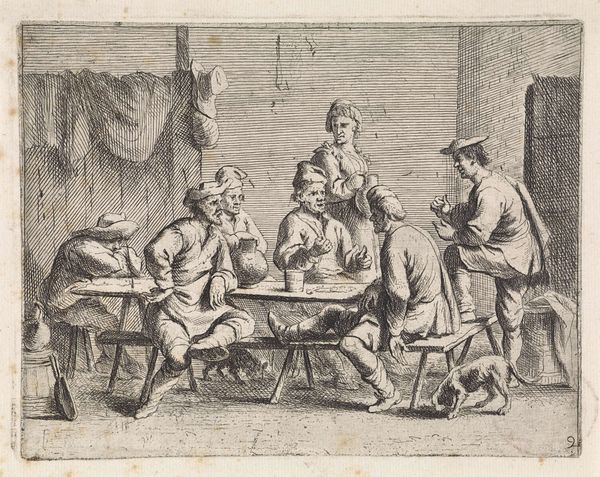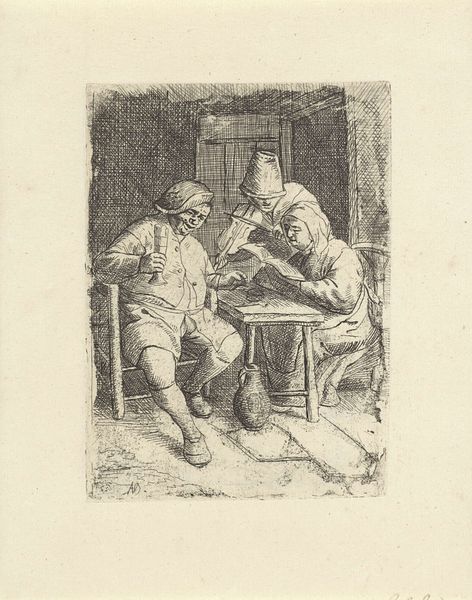
drawing, paper, ink, charcoal
#
portrait
#
drawing
#
baroque
#
charcoal drawing
#
figuration
#
paper
#
ink
#
group-portraits
#
genre-painting
#
charcoal
#
watercolor
Dimensions: height 243 mm, width 360 mm
Copyright: Rijks Museum: Open Domain
Editor: So, this drawing is "Maaltijd in Emmaüs" or "Meal at Emmaus," possibly from 1594 to 1677, by Gerard ter Borch the Elder. It’s rendered in charcoal, ink, and watercolor on paper and housed here at the Rijksmuseum. The tonal range achieved with the limited color palette is striking. How would you interpret the visual organization of this drawing? Curator: Focusing purely on the intrinsic pictorial structure, observe how ter Borch articulates space. The composition adheres to a precise orthogonal structure, defined by the table and the orthogonals meeting in the background. Consider how the centrally placed figure is haloed. This serves as a focal point. Do you observe how the light reinforces a formal reading? Editor: Yes, the light emanating from the central figure draws your eye immediately. But what does that central figure *represent* to the visuality? Curator: Within a formalist analysis, representation takes a back seat. Note how the contrasting dark shadows against the lighter planes construct a cohesive composition. How the light and shadow themselves operate structurally within the piece, establishing depth, volume, and rhythm for the eye. This self-referential approach transcends a reliance on symbolism. Editor: I see what you mean, though I keep wanting to analyze the iconographic dimension! Are there other drawings with this kind of composition we can compare it to? Curator: Yes, examining works by contemporaries can reveal shared formal concerns and structural motifs. Focus on line, tone, and balance rather than searching for meaning through subject matter. What’s most remarkable is the way ter Borch's handling of the composition serves a dynamic interplay between form and light. Editor: That makes sense, it's about understanding the essence of the artwork through the intrinsic artistic choices made. I definitely see the drawing in a new light. Curator: Precisely. Understanding the visual grammar of an artwork is crucial to appreciation and informs any external interpretive activity.
Comments
No comments
Be the first to comment and join the conversation on the ultimate creative platform.
